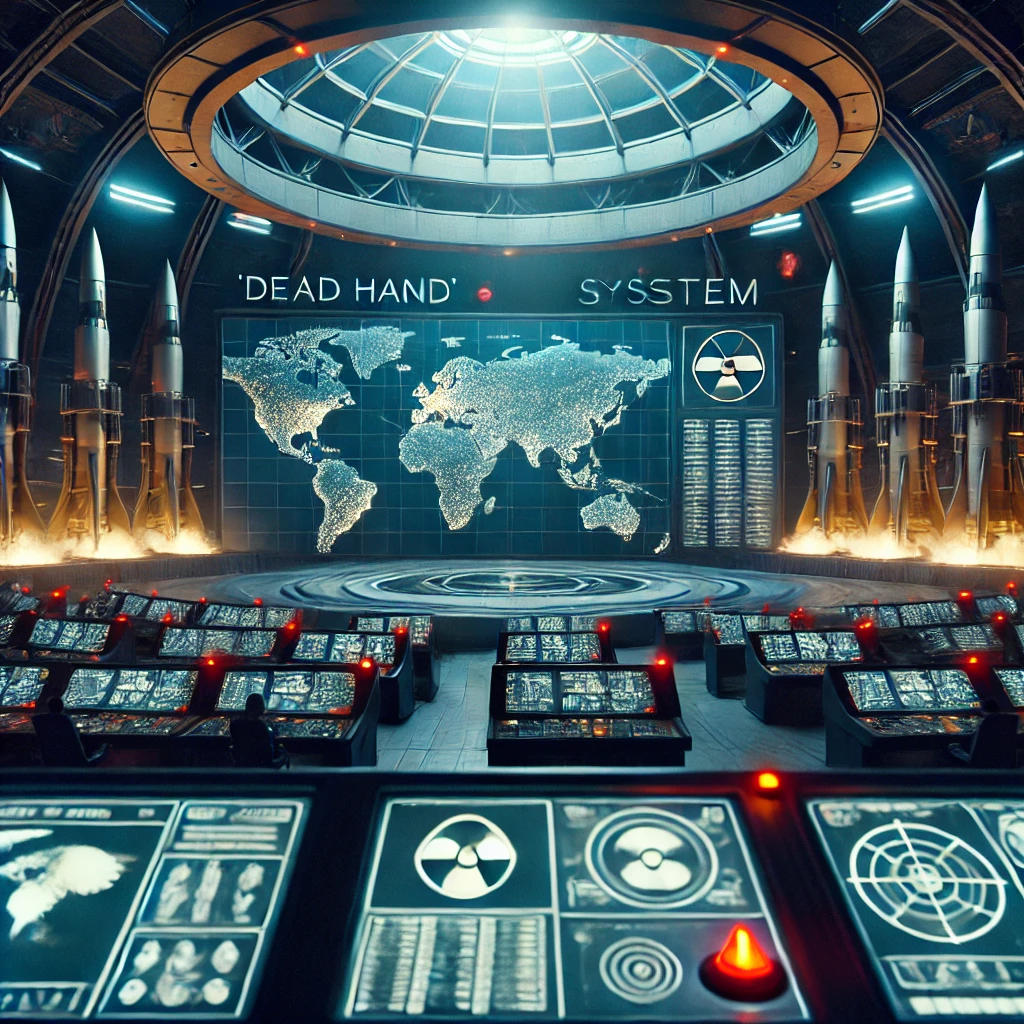Dead Hand: Russia's Silent Sentinel of Nuclear Retaliation
The "Dead Hand" (also known as Perimeter) is a Russian nuclear deterrence system developed during the Cold War. It was designed as an automated system to ensure that the Soviet Union could launch a retaliatory nuclear strike, even if its leadership and command centers were incapacitated or destroyed in an enemy attack.
Here’s how it works in principle:
Automated Retaliation: If a nuclear attack wipes out the Soviet leadership, the Dead Hand system could automatically trigger a retaliatory strike without human intervention.
Sensors and Command Structure: The system is equipped with various sensors that detect signs of a nuclear attack, such as seismic activity, radiation, and communications outages. If these indicators suggest that the Soviet Union has been hit with a nuclear strike and no command orders are being given, the system could automatically authorize the launch of nuclear missiles.
Deterrence Strategy: The purpose of Dead Hand was to deter a first-strike attack by ensuring that, even if all the decision-makers were eliminated, the country would still be able to strike back, thus maintaining the principle of Mutually Assured Destruction (MAD).
While it's unclear how operational Dead Hand is today, it is still part of discussions about Russia's nuclear capabilities and serves as a chilling reminder of the Cold War-era nuclear strategies.
The "Dead Hand" (also known as Perimeter) is a Russian nuclear deterrence system developed during the Cold War. It was designed as an automated system to ensure that the Soviet Union could launch a retaliatory nuclear strike, even if its leadership and command centers were incapacitated or destroyed in an enemy attack.
Here’s how it works in principle:
Automated Retaliation: If a nuclear attack wipes out the Soviet leadership, the Dead Hand system could automatically trigger a retaliatory strike without human intervention.
Sensors and Command Structure: The system is equipped with various sensors that detect signs of a nuclear attack, such as seismic activity, radiation, and communications outages. If these indicators suggest that the Soviet Union has been hit with a nuclear strike and no command orders are being given, the system could automatically authorize the launch of nuclear missiles.
Deterrence Strategy: The purpose of Dead Hand was to deter a first-strike attack by ensuring that, even if all the decision-makers were eliminated, the country would still be able to strike back, thus maintaining the principle of Mutually Assured Destruction (MAD).
While it's unclear how operational Dead Hand is today, it is still part of discussions about Russia's nuclear capabilities and serves as a chilling reminder of the Cold War-era nuclear strategies.
Dead Hand: Russia's Silent Sentinel of Nuclear Retaliation
The "Dead Hand" (also known as Perimeter) is a Russian nuclear deterrence system developed during the Cold War. It was designed as an automated system to ensure that the Soviet Union could launch a retaliatory nuclear strike, even if its leadership and command centers were incapacitated or destroyed in an enemy attack.
Here’s how it works in principle:
Automated Retaliation: If a nuclear attack wipes out the Soviet leadership, the Dead Hand system could automatically trigger a retaliatory strike without human intervention.
Sensors and Command Structure: The system is equipped with various sensors that detect signs of a nuclear attack, such as seismic activity, radiation, and communications outages. If these indicators suggest that the Soviet Union has been hit with a nuclear strike and no command orders are being given, the system could automatically authorize the launch of nuclear missiles.
Deterrence Strategy: The purpose of Dead Hand was to deter a first-strike attack by ensuring that, even if all the decision-makers were eliminated, the country would still be able to strike back, thus maintaining the principle of Mutually Assured Destruction (MAD).
While it's unclear how operational Dead Hand is today, it is still part of discussions about Russia's nuclear capabilities and serves as a chilling reminder of the Cold War-era nuclear strategies.
0 Comentários
0 Compartilhamentos
2K Visualizações
0 Anterior


